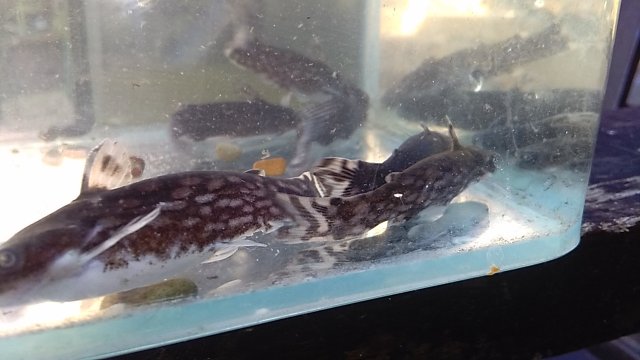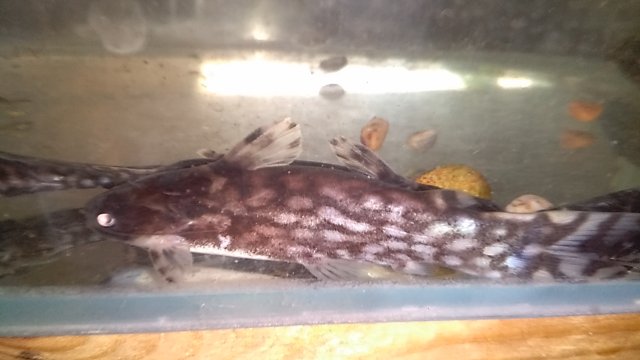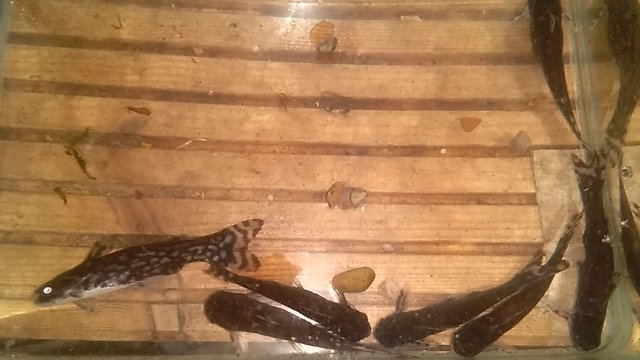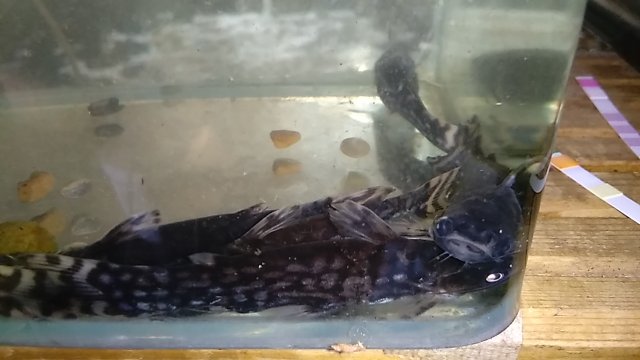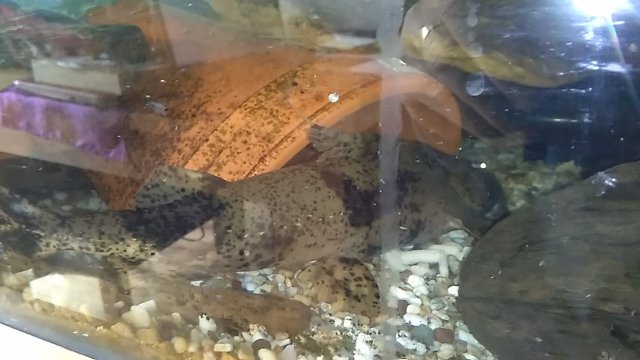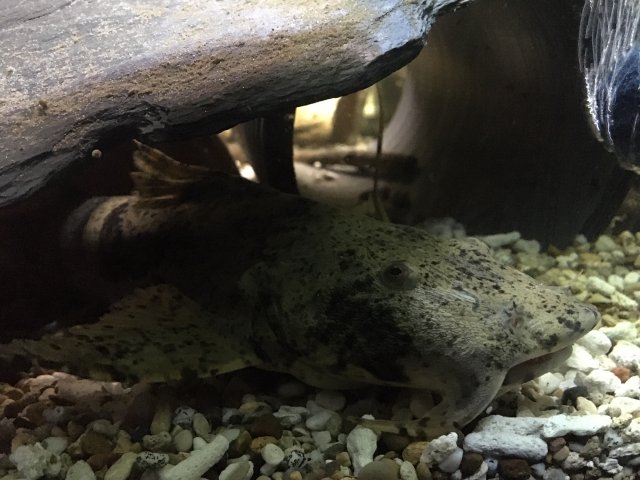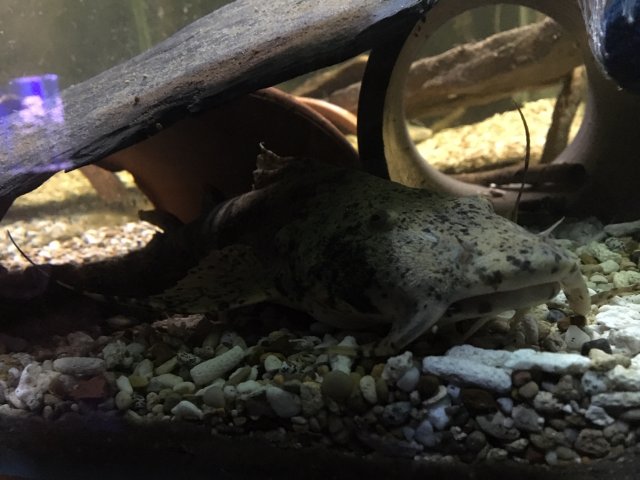These three photos are more recent but still a few months old. I initially listed as bagarius bagarius which it did not look like. Over time it's colour seems to vary from a light grey to a more orange and back again however seems to be settling out more grey.
then in another post thought he was Yarrelli, now not sure.
unfortunately getting a photo in his new tank with the skittish piraiba won't be easy as his new hideout has him well hidden too, but will try, as interested to capture his progress and figure his type.
Oval eyes? Points to indochina ( are they oval or round with oval aperture?)
Really tight to body top "whiskers" point more to Yarrelli
and hugely upturned pectoral fins (getting more pronounced as he grows) points to bagarius bagarius.
View attachment 1401891View attachment 1401892View attachment 1401893
I just lost a 98% finished reply ???
Your fish is Indochina. The oval eyes have it. This is in reference to the shape of the eyes themselves, as opposed to the shape of the pupil. Bagarius all have that oddly shaped pupil with the flap to help protect from bright sun.
The eyes are always the first thing that I look for when diagnosing a species of Bagarius. When using the eyes, we can determine whether or not the fish belongs to what I think of as the bagarius clade or the rutilus clade. If the fish has the oval eyes, we need only consider species from the rutilus clade.
Once we have determined to which of these clades the fish in question belongs, we must determine which of the three species in the rutilus clade we're looking at.
Due to the size of your fish, we can immediately discard the dwarf species. At this point, we must determine rutilus from Indochina. The key traits I look for at this point are markings, color and the shape of the head. One can take a shortcut and generally get it correct in relation to these two species simply by determining whether or not the fish has a whole bunch of spots like yours does. This will typically give a correct result, though not always, as stressed Indochina can lose their spots. The same is true of the orange fins in rutilus.
The morphological characteristic I find most useful between these two species is the shape of the head and the position of the mouth. Indochina has a nearly terminal mouth (at the leading edge of the head) with the lower jaw only slightly behind the tip of the snout; whereas rutilus has a distinctly inferior positioned mouth (on the bottom of the head) with a fairly noticeable gap between the tip of the snout and the position of the mouth.
The general build of the head is also quite different between these two species. Indochina has a fairly robust bone structure, while rutilus is quite gracile. The jaws and the tip of the snout on Indochina tends to be rounded off and bulky looking, while the jaws and the tip of the snout on rutilus are fairly sharp, the the lower jaw when closed fitting in behind a large lip on the upper jaw, giving the effect of appearing hidden.
I suppose I should probably address all of this in my sticky. ?


